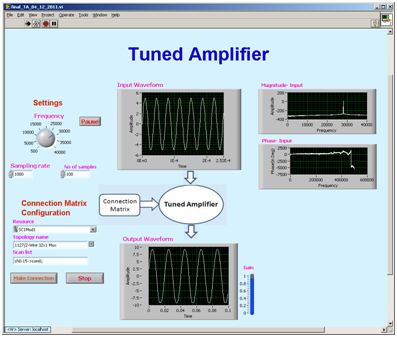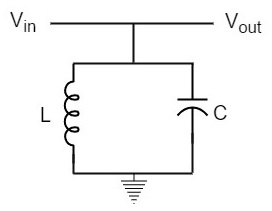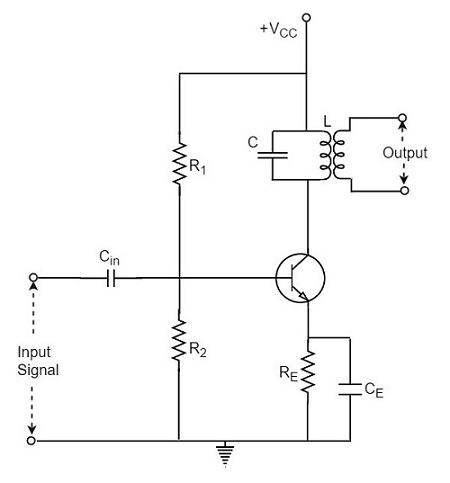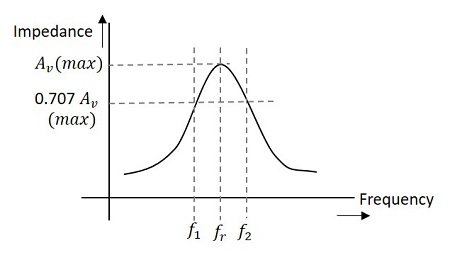A tuned amplifier is an electronic circuit that amplifies a specific frequency or a narrow band of frequencies. It is designed to amplify a signal without adding noise or distortion.
Tuned amplifiers use a tuned circuit, which consists of an inductor and a capacitor connected in parallel or in series, to filter the desired frequency range. The amplifier stage amplifies the filtered signal and provides the required gain.

Features of Tuned Amplifier:
- Amplify a specific frequency or narrow band of frequencies
- Provide high gain without adding noise or distortion
- Use a tuned circuit (parallel or series) to filter the desired frequency range
- Can be used in various applications including radio communication, audio systems, medical equipment, instrumentation, and radar systems
- The amplifier stage can be a single transistor, a Darlington pair, or a push-pull amplifier.
Types
- Parallel
- Series
Parallel Tuned Amplifier:
In a parallel-tuned amplifier, the tuned circuit is connected in parallel with the load resistor. The frequency selectivity of the amplifier is determined by the resonant frequency of the tuned circuit. The output voltage is taken across the load resistor. It is also known as a tank circuit amplifier.

Series Tuned Amplifier
In this fashion, the tuned circuit is connected in series with the load resistor. The resonant frequency of the tuned circuit determines the frequency selectivity of the amplifier. The output voltage is taken across the load resistor. The series is also known as a choke-coupled amplifier.

Working

This consists of a tuned circuit and an amplifier stage. The tuned circuit consists of an inductor and a capacitor connected in parallel or in series. This stage amplifies the signal from the tuned circuit. The amplifier stage can be a single transistor, a Darlington pair, or a push-pull amplifier.
The tuned circuit acts as a filter and allows only the signal of the resonant frequency to pass through it. The amplifier stage amplifies the filtered signal and provides the required gain. The output of the tuned amplifier is the amplified signal at the resonant frequency.
Frequency Response Tuned Amplifier
The frequency response is the plot of the gain of the amplifier versus the frequency of the input signal. It shows the amplifier’s ability to amplify signals of specific frequencies. Also, the frequency response is characterized by a peak at the resonant frequency of the tuned circuit.

The bandwidth is defined as the range of frequencies over which the gain of the amplifier is greater than a specified fraction of the maximum gain. Its bandwidth is narrow and is centered around the resonant frequency of the tuned circuit. A narrower bandwidth provides better selectivity and filtering of signals, while a wider bandwidth provides broader amplification of signals.
Applications
- Medical Equipment: We use this amplifier in medical equipment to amplify and filter specific frequencies in medical imaging devices.
- Audio Amplification: We use audio amplification in audio amplifiers to amplify specific frequency ranges and provide better sound quality.
- Instrumentation: We use tuned amplifiers in instrumentation to amplify and filter specific signals.
- Radar Systems: These amplifiers are used in radar systems to amplify and filter specific radar signals.

